 At the end of this past summer, we created a survey asking meetings to tell us about their book clubs and reading or discussion groups. We heard from 13 groups representing 10 meetings in 10 different states across America (from Maine to New Mexico). As you read the following submissions, you’ll learn about 18 different titles, including one Friends Journal article (!), a Bible study pamphlet for Friends, and one DVD (who says you always have to read a book?). You’ll also discover that being in a book club can be a refreshing, low-pressure activity to exchange ideas and learn more about your fellow Friends without the formality of meeting for worship for business. These groups tend to be easy-going, informal, leaderless, flexible, adaptable, and democratic. As Leslie Umans from Belfast Area (Maine) Meeting put it, “We find ourselves delving deep into both the author’s words and our own selves.”
At the end of this past summer, we created a survey asking meetings to tell us about their book clubs and reading or discussion groups. We heard from 13 groups representing 10 meetings in 10 different states across America (from Maine to New Mexico). As you read the following submissions, you’ll learn about 18 different titles, including one Friends Journal article (!), a Bible study pamphlet for Friends, and one DVD (who says you always have to read a book?). You’ll also discover that being in a book club can be a refreshing, low-pressure activity to exchange ideas and learn more about your fellow Friends without the formality of meeting for worship for business. These groups tend to be easy-going, informal, leaderless, flexible, adaptable, and democratic. As Leslie Umans from Belfast Area (Maine) Meeting put it, “We find ourselves delving deep into both the author’s words and our own selves.”
Here are a few other suggestions you may find helpful: There’s no wrong way to pick a book; when asked how they decide on what to read, many groups responded simply and with common sense: “As one book is ending, another is chosen”; “We base most selections on a member’s recommendation”; and “Someone will make a suggestion; others say yes or no or offer alternatives. Never a problem.” If your group is having trouble with book logistics (hardcopy vs. eBooks, buy vs. borrow), check out the tips from Rob Pierson of Albuquerque (N.M.) Meeting. And lastly, if you haven’t read The New Jim Crow by Michelle Alexander yet, well it’s a hot topic among Friends today so I suggest you join me in picking up a copy and diving in. Happy reading!
—Gail Whiffen Coyle, associate editor
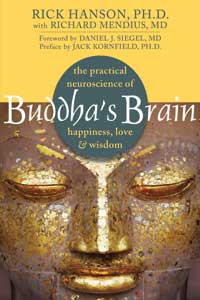 Reading/Discussion Group of Friends Meeting of Washington (D.C.)
Reading/Discussion Group of Friends Meeting of Washington (D.C.)
Submitted by Joseph A. Izzo
Logistics: We meet in the parlor of the meetinghouse on the third First Day at 12:15 p.m. for one hour. About four to eight adults attend each meeting.
On deciding what to read: So far we have only read one complete book together as a group: Buddha’s Brain: The Practical Neuroscience for Happiness, Love, and Wisdom by Rick Hanson and Richard Mendius. We decided to read it in order to learn both neuroscience and mindfulness techniques to aid meditation and to learn how to “tame the reptilian brain” so we can respond compassionately rather than reactively to people, situations, and events.
Currently reading: Twelve Steps to a Compassionate Life by Karen Armstrong
Discussion style: With the first book we took almost two and a half years to read and discuss it in round-robin fashion. With Armstrong’s book we presume people have read the chapter in advance, and are using a discussion guide provided by the Charter for Compassion. We have met for the last three months and will continue for another ten months to complete the remaining chapters. For both book discussions I served as the facilitator of open dialogue within the group and now we’re using the reader’s guide to discuss each chapter in Armstrong’s book.
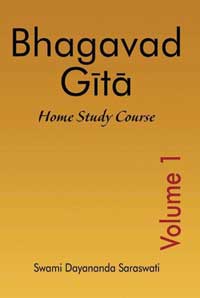 Gita Vicara Group of Friends Meeting of Washington (D.C.)
Gita Vicara Group of Friends Meeting of Washington (D.C.)
Submitted by David Etheridge
Logistics: We meet in the home of one of the participants one or two times a month on Sundays at 3:00 p.m. for an hour and a half. The next date is decided at the end of each meeting. Four people (ages 30–70) are in the group; other ages, including teens, would be very welcome.
On deciding what to read: We are working our way through a lengthy and detailed commentary on the entire Bhagavad Gita by Swami Dayananda Saraswati. We read and discuss about 20 pages of text per session, covering roughly three or four verses. On that plan we have no occasion to make decisions about what to read.
Discussion style: We have an open dialogue. There is no set list of questions. Part of the session involves chanting an opening and closing prayer and also chanting the Gita verse we are studying. One person who has been trained in chanting Sanskrit leads the chanting, but no one leads the discussion.
Currently reading: We are in the middle of the third of the 18 chapters of the Bhagavad Gita.
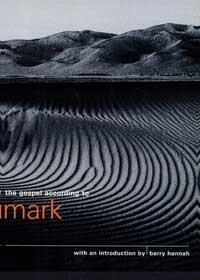 Friendly Bible Study of Friends Meeting of Washington (D.C.)
Friendly Bible Study of Friends Meeting of Washington (D.C.)
Submitted by David Etheridge
Logistics: We meet in the meetinghouse parlor every third Sunday at 12:30 p.m. for about an hour. Six people currently participate in the group, ranging from 30 to 75 years old.
On deciding what to read: The convener of the group decided to start with the Gospel of Mark. At six verses a month, we will not have to make another decision for several years.
Discussion style: We use a list of questions from the Friendly Bible Study pamphlet by Joanne and Larry Spears. It’s available online at read-the-bible.org/FriendlyBibleStudy.htm. For the most part, Friends simply listen to the responses of each participant without discussion. The convener provides the minimal leadership needed: reading each question and calling on each participant in turn.
Currently reading: Second chapter of Mark
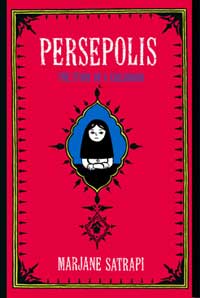 Birmingham (Ala.) Meeting Book Club
Birmingham (Ala.) Meeting Book Club
Submitted by Nancy Whitt
Logistics: We meet in the meetinghouse sitting room every second Tuesday. The group is open to anyone who wants to come; presently about four to six adults attend each session.
On deciding what to read: Someone will make a suggestion; others say yes or no or offer alternatives. Never a problem.
Discussion style: Dialogue, no leaders, Friends say what’s on their minds.
Currently reading: Persepolis: The Story of a Childhood by Marjane Satrapi
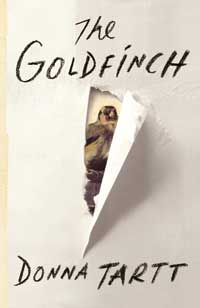 Book Discussion Group of Wilmington (Ohio) Meeting
Book Discussion Group of Wilmington (Ohio) Meeting
Submitted by Jennilou Grotevant
Logistics: We meet at the meetinghouse once a month, usually the third Sunday, for about an hour. Six to eight people attend, and most of us are over the age of 60.
On deciding what to read: We read serious, contemporary fiction. We try to have at least one title chosen ahead of time; sometimes we have two or three lined up. We base most selections on a member’s recommendation. We rarely read something that no one in the group has read. Our county has an annual County Reads program, and we read the title selected for that. We don’t vote. We just talk about titles. If several are recommended, we just put them on the schedule.
Discussion style: Open dialogue. Sometimes one of the members will google a list of questions. If we run out of things to say, we may look at that. We generally discuss what we liked, didn’t like, and whether we would read another book by the same author. We talk about character, plot, writing style.
Currently reading: The Goldfinch by Donna Tartt
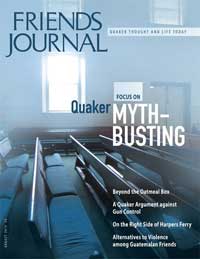 Friends Journal Discussion Group of St. Petersburg (Fla.) Meeting
Friends Journal Discussion Group of St. Petersburg (Fla.) Meeting
Submitted by Peter Crockett
Logistics: We meet in a member’s home once a month on a Wednesday night at 7:00 p.m. for an hour and a half. Our first meeting had ten people in attendance.
On deciding what to read: We started the group specifically to discuss an article from the August 2014 issue of Friends Journal. For our first gathering, we chose the article “Exploring the Unwritten Rules of Meeting for Worship” by Debbie Humphries.
Discussion style: We started with a simple question of “What grabbed you, really stood out, in this article?” Everyone had a chance to speak to that, and then we meandered around a bit. It was really an enthusiastic group. The ten people at our first gathering ranged from Friends who had been born into Quaker families to attenders in their first year of attending. We learned our new attenders suspect the unspoken and unwritten rules, but fear they will only learn them when they accidentally transgress them and are scolded. The topic brought out a lot of energy, as we all know we’d love not to have rules, but we do, and so how do we share them? One person came just to make sure this wasn’t a group that was going to make more rules. She feels “the less rules, the better” (of course, that’s her rule).
Currently reading: “Exploring the Unwritten Rules of Meeting for Worship” by Debbie Humphries (FJ Aug.)
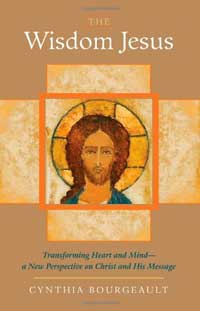 Quaker Studies Group of Belfast Area (Maine) Meeting
Quaker Studies Group of Belfast Area (Maine) Meeting
Submitted by Leslie Umans
Logistics: We meet in our worship space on the fourth Thursday of each month from noon to 1:30 p.m. for a spiritual, brown-bag lunch and conversation with six Friends. The group is open to all ages, but is reflective of our meeting members who are predominantly over 50 years old.
On deciding what to read: We, as a group, have generated a reading list from different faith traditions. We choose a title for the upcoming month or two, sometimes dividing a single work over a couple of months in order to give us a chance to more fully immerse ourselves in what the reading offers. Listening for the “sense of the study group” guides what we choose to read. As we all feel there’s something to be gleaned from most any book and the experience of discussing it, we’ve not found it difficult to pick out what we will read next.
Discussion style: We encourage thoughtful, open dialogue, eschewing a list of questions to answer and proceeding without a designated leader. However, if one of us has greater familiarity with a work, having read it before it was chosen by the group to enjoy, that Friend may get us started by pointing out a particular passage or insight. After that, Friends—as moved—respond to the text or to what another has shared. And so, we find ourselves delving deep into both the author’s words and our own selves. We have considered guidelines for reading works within a Quaker framework, but prefer to simply remain open to how a work speaks to us.
Currently reading: The Wisdom Jesus: Transforming Heart and Mind—A New Perspective on Christ and His Message by Cynthia Bourgeault
Additional thoughts: Our Quaker Studies Group is a new venture that springs from the growing movement of Spirit in our small, rural Maine meeting. We open and close with silence and work to listen to one another as we would during worship sharing but with a little more energy and a little less space between the thoughts Friends share. We find that the discussion of various works supports us in our individual spiritual journeys, the readings serving as a springboard to new discoveries and to the crystallization of that which we “knew,” but had not yet clearly formulated or articulated.
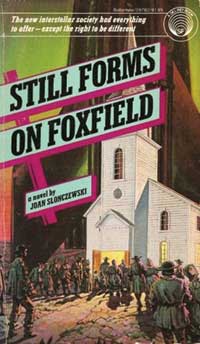 Readings in Quakerism of Albuquerque (N.M.) Meeting
Readings in Quakerism of Albuquerque (N.M.) Meeting
Submitted by Rob Pierson
Logistics: We meet in the meetinghouse. The time, frequency, and length of our meetings all varies. For several books, we’ve done one hour-and-a-half session to get together and discuss what we’ve read and how it has affected us. Sometimes this has led to subsequent sessions decided ad hoc by the group. For some complex books, we have had multiple sessions and email discussion follow-ups.
Finding a day of the week is challenging. Most discussions have been on Monday evenings. This fall, we are trying two sessions per book: one on Sunday after meeting for worship, and the second two weeks later on a Monday evening. Attendance (both who and how many) also varies by book. Usually we have 10 to 20 people in any discussion. Others read along but do not come to the meetings. All ages are welcome, but in practice, sessions are often attended predominantly by older adults. Busy schedules make it difficult to find a way for younger Friends and families to take part.
On deciding what to read: Our Adult Education Committee schedules sessions, but any member or attender can suggest a book and lead the group. We try to roughly plan out a season, although things have a way of changing over time due to people’s shifting schedules. Most books are suggested by Friends based on personal interests, but some books are chosen to help thresh a topic arising in meeting for worship for business or to get to know a speaker for regional or yearly meeting sessions. There is no “vote” on book topics and Adult Ed only asks that there be some connection to roots of Quaker faith and practice. Good next-book suggestions are often affirmed by group enthusiasm, and, over the last year, we’ve had a wide variety of books and leaders.
Discussion style: How we discuss a book varies. There is a leader, or at least a convener for each session. Generally there is open dialogue, but some leaders provide guiding questions or supporting materials.
Currently reading: This fall, we started in September with Rex Ambler’s The Quaker Way in parallel with a separate Wednesday evening series based on his Experiment with Light groups. October is Anthony Manousos’s biography, Howard and Anna Brinton: Re-Inventors of Quakerism in the Twentieth Century. November is Mike King’s Quakernomics: An Ethical Capitalism, and in December or January, we’ll be reading Joan Slonczewski’s sci-fi novel, Still Forms on Foxfield.
Additional thoughts: Book logistics can be a challenge! Some Friends will want e-books. Some will want hardcopy. Some will want to buy, others to borrow or share as cheaply as possible. We’ve generally tried to get a headcount a few weeks ahead and order some books new and others used when available, keeping at least one copy as a loaner that ends up in the meetinghouse library. QuakerBooks (of Friends General Conference) can be a godsend, but remember that they can’t keep infinite stock on their shelves ready to ship! We’ve also found that a reading group often engages Friends who do not regularly attend worship, so it is important to reach out through all media and not just rely on announcements at the rise of meeting!
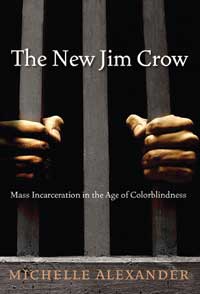 New Jim Crow Book Group of Albuquerque (N.M.) Meeting
New Jim Crow Book Group of Albuquerque (N.M.) Meeting
Submitted by Tina Kachele
Logistics: We meet at the meetinghouse. Our meetings used to be biweekly, now they are monthly and last one-and-a-half to two hours long. The number of people in attendance ranges from six to twelve; eighteen is the most we’ve had. All ages are welcome, although the participants usually are 40 years old or older.
On deciding what to read: Toward the end of fall last year, a small group in our meeting agreed to meet and begin an exploration and learning together about racism and white privilege. Beginning in early January of this year, we met about once a month and, after several meetings, decided to take up a study of Michelle Alexander’s book, The New Jim Crow: Mass Incarceration in the Age of Colorblindness. From May to late June, we met every other week, using the study guide recommended by American Friends Service Committee.
Since our last scheduled session about the book, we have had two meetings to continue exploring ways into actions to end mass incarceration. Some in our group have been involved in recent activism addressing police brutality in Albuquerque, and are interested in connecting the dots between mass incarceration and violence in policing. We have not yet agreed to another book to read together, but have rather been focused on what actions we can take in our community, having been inspired by Alexander’s book to work for change.
Discussion style: We agreed to share facilitation of our meetings, rather than having one regular leader or clerk. During our scheduled sessions about the book, we followed the study guide to varying degrees, at times adhering to the questions therein more than others. Other times the book served as a starting point for stories from participants of their experiences with the prison system, both inside and out.
Currently reading: We have not yet chosen another book to read together.
Additional thoughts: Several of the participants have been inspired to focus more specifically on issues of incarceration, the injustices suffered by those incarcerated, the economics of the prison-industrial complex, the systemic and institutionalized racism in that system, and the connections to the current state of (militarized) policing in the United States. We are also exploring ways to become more connected to other groups and organizations in the Albuquerque community that were working on these issues already, to see how we can support and perhaps join with their work. We are very much still in a forming stage, and no doubt owe our heightened interest in and awareness of these issues and the work being done to effect change to our reading of The New Jim Crow.
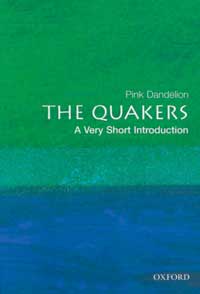 Quaker Conversations Group of Valley Mills Meeting in Indianapolis, Ind.
Quaker Conversations Group of Valley Mills Meeting in Indianapolis, Ind.
Submitted by Marilee Gabriel
Logistics: We meet at the meetinghouse on the second and fourth Tuesdays of the month at 6:30 p.m. Our meetings include food, fellowship, and five to six adults. Teens are also encouraged to attend.
On deciding what to read: As one book is ending, another is chosen.
Discussion style: Open dialogue with a facilitator.
Currently reading: The Quakers: A Very Short Introduction by Pink Dandelion
Additional thoughts: We have two reading groups at Valley Mills Meeting. This is a new group focused on Quakers throughout history. It’s a good review group or orientation group. We occasionally supplement our reading with a related video.
 One Book One Yearly Meeting of Philadelphia Yearly Meeting
One Book One Yearly Meeting of Philadelphia Yearly Meeting
Submitted by Chris Mohr
Logistics: Every year, our whole yearly meeting chooses one book to read together. Monthly meetings within the yearly meeting’s footprint across Pennsylvania, New Jersey, Delaware, and Maryland, are encouraged to form their own groups to discuss and engage with the content of the chosen book. Therefore, the when, where, how many, and for how long varies by monthly meeting. The program is open to all ages, with resources available for children, young people, and adults.
On deciding what to read: A group meets during Philadelphia Yearly Meeting (PhYM) annual sessions to discern a choice of a book to encourage monthly meetings to read together. A committee (the 1B1YM Working Group) then prepares some introductory material encouraging meetings to participate, queries, and a list of additional related resources on the topic. The yearly meeting then distributes this to monthly meetings to use as they wish. To anchor our spiritual journeys in shared ground, we choose this tool as one of many for deepening our faith and witness.
Discussion style: This also varies. Some meetings may discuss the book over three sessions once a week or once a month. Others may wish to spend more time on it. We strive to make the book accessible to all generations either in content or in the supporting materials. There is a page on PhYM’s website (pym.org/one-book-one-yearly-meeting) where meetings can find queries for sections of the book; suggestions and resources for children and young people; and adult resources such as study guides, opportunities for action, organizations doing work on related topics, and further reading.
With the current book, we hope many meetings will dive into the issues of mass incarceration and systemic racism. Some individual Friends or meetings may feel led to act in their local communities and in the wider community of Friends. The yearly meeting would like to hear from local meetings about their experience.
Currently reading: The New Jim Crow: Mass Incarceration in the Age of Colorblindness by Michelle Alexander
Additional thoughts: This year’s 1B1YM Working Group is made up of six Friends: Emily Blanck; Melinda Wenner-Bradley; Melanie Douty; Chris Mohr; Zachary Dutton, staff; and Lynne Oberfield, convener.
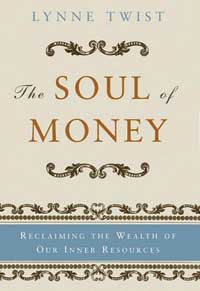 Adult Study Group of Flushing (N.Y.) Meeting
Adult Study Group of Flushing (N.Y.) Meeting
Submitted by Caroline Lane
Logistics: We meet in the fellowship room next to the worship room in our meetinghouse every Sunday at 10:00 a.m. for about an hour. Around four to six people attend each time. The name implies adults only, but we may be re-thinking that as we have just renamed the First Day Committee as Education Committee with the idea of considering education for all ages.
On deciding what to read: Anyone can make a suggestion for the group to consider. The decision is then made by consensus. Generally, the group has been open to all suggestions made during the three years I’ve been part of the group.
Discussion style: One person from the group reads aloud from the selection. During the reading, if someone has a question or a comment, he or she interrupts the reading at a stopping place and others respond. There is usually some discussion at the close of the period each session. At the end of a selection, we reflect on its impact and we reflect back on other readings that may bear a relationship.
Currently reading: We have just finished reading The Soul of Money: Reclaiming the Wealth of Our Inner Resources by Lynne Twist. We are departing from that for our next selection. We have a DVD from the Great Courses on the Old Testament which we will be watching together on a portable DVD player.
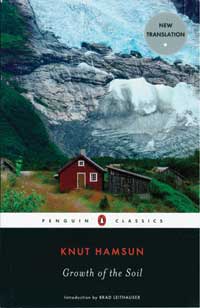 Book Group of Medford (N.J.) Meeting
Book Group of Medford (N.J.) Meeting
Submitted by Alice Andrews
Logistics: We meet at the meetinghouse on the fourth Sunday of the month at 7:00 p.m. for two hours. Eight to ten Friends all adults, as our meeting has no teens.
On deciding what to read: We maintain a list, and people make suggestions to add to it. Every other month or so at the end of our discussion, we decide on the next books as a group. We read one a month. We started out reading social commentary, then tried a book of poetry. Now we are reading “classic” novels, but not long ones. People sometimes bring poems to share.
Discussion style: Initially we went around the circle and shared reactions one person after another, but now we just have an open dialogue. There is one person who often leads the discussion, but we are all conscious of making sure people have the chance to share as much as they want to.
Currently reading: Growth of the Soil by Knut Hamsun
Additional thoughts: We also have a movie group, and we vote to select the movies, but for the books we discuss the choices and decide.


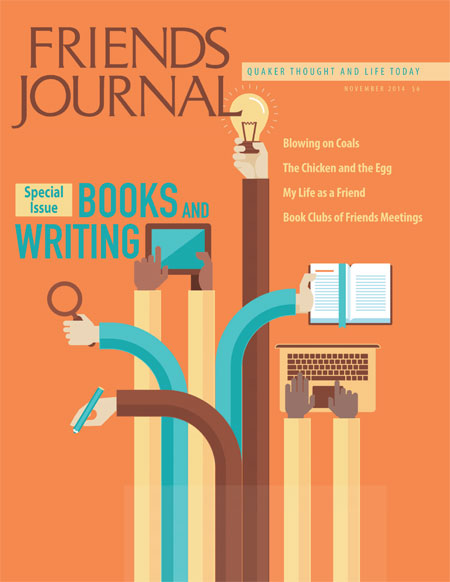
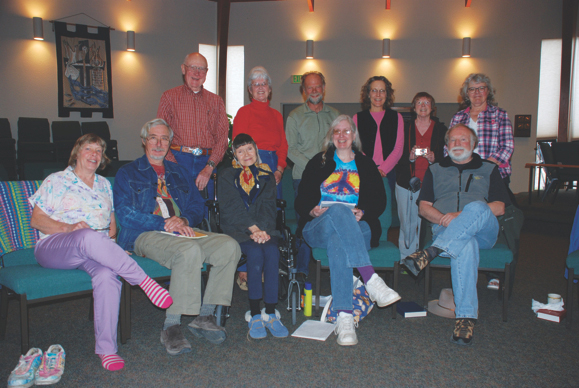

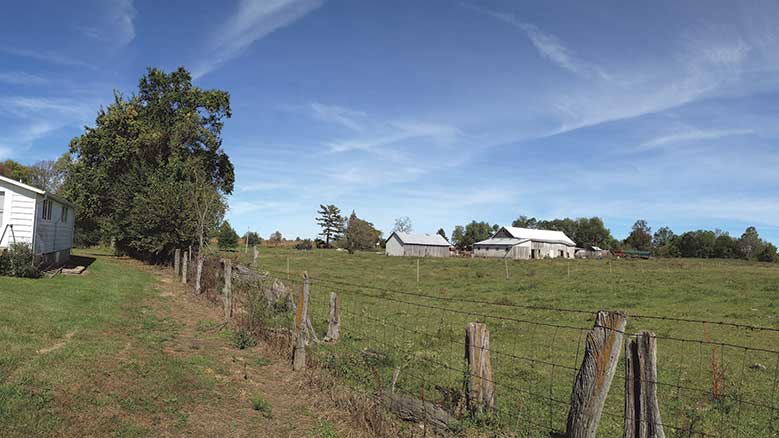
Comments on Friendsjournal.org may be used in the Forum of the print magazine and may be edited for length and clarity.